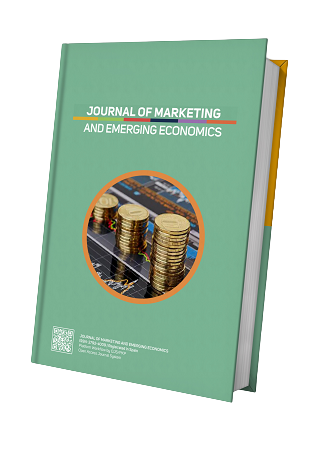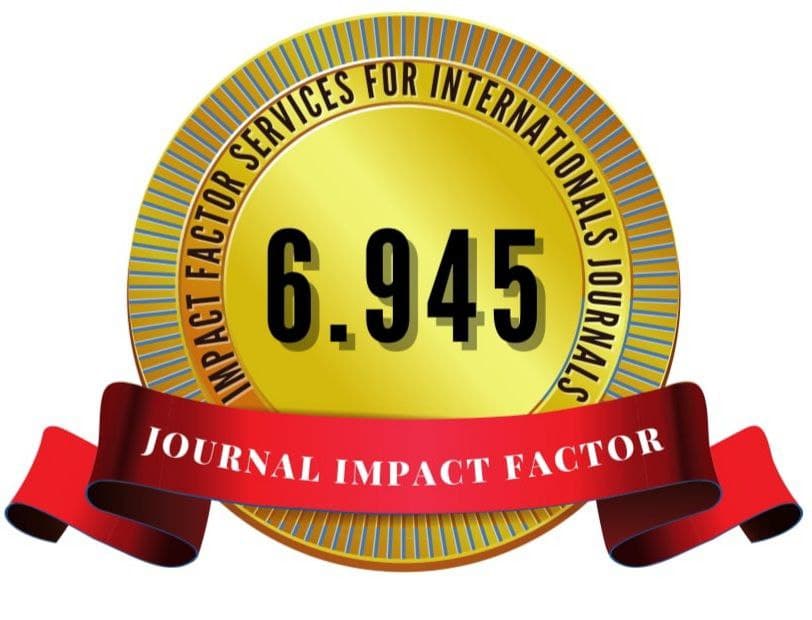Mediation of Customer Experience in the Influence of Customer Engagement on Consumer Behavioral Intention of Halal Network International Products in Bengkulu City
Keywords:
Customer Experience, Customer Engagement, Consumer Behavioral Intention, MediationAbstract
Currently, many people are highlighting PT. HNI with the view that the products are too expensive and difficult to reach for the general public. However, many have also experienced the benefits of these products due to their extensive uses and benefits. PT. HNI is known for products that have various properties that are beneficial for health and fitness. Even though the price may be considered high by some people, HNI products are recognized as having significant added value in maintaining health and quality of life. This reflects the challenge of providing high quality products that are widely accessible to the public while maintaining company standards and reputation. Therefore, the aim of this research is to determine the influence of Customer Engagement on Behavioral Intention, Customer Experience, Consumers of International Network Halal Products Customer experience towards Behavioral intention and Customer Engagement towards Customer Intention mediated by Customer Experience in Bengkulu City. This research refers to a type of quantitative descriptive-based research, which refers to data analysis methods for organizing, parsing and synthesizing information. These findings indicate that Customer Engagement has a significant and positive influence on Behavior Intention and Customer Engagement plays a positive and significant role on Customer Experience. Customer Experience has a very strong and significant influence on Behavior Intention, Customer Engagement has a significant influence on Behavior Intention, and this influence is mediated by Customer Experience. This can be accepted based on these findings.
References
M. Gul, J. Akbar, M. Ikramullah, and M. H. Khan, “A Research Overview of Challenges in The Global Halal Market,” Elem. Educ. Online, 2020, [Online]. Available: https://www.researchgate.net/profile/Muhammad-Hayat-Khan-3/publication/367008189_A_Research_Overview_of_Challenges_in_The_Global_Halal_Market/links/63bda855097c7832caa6d051/A-Research-Overview-of-Challenges-in-The-Global-Halal-Market.pdf
A. S. Ruhana, “Research on Halal Certification in Indonesia,” … id/index. php/JIEL/index December, 2021, [Online]. Available: http://download.garuda.kemdikbud.go.id/article.php?article=3004644&val=27165&title=Research%20on%20Halal%20Certification%20in%20Indonesia
A. M. Islam, A. S. Lukito-Budi, and N. Indarti, “A systematic review on halal supply chain research,” The International Conference …, 2020, [Online]. Available: http://www.ieomsociety.org/ieom2020/papers/339.pdf
A. Susanty, N. B. Puspitasari, A. D. Caterina, and ..., “Mapping the barriers for implementing halal logistics in Indonesian food, beverage and ingredient companies,” Journal of Islamic …, 2021, doi: 10.1108/JIMA-11-2019-0244.
N. A. Rakhmawati, G. K. Utomo, and ..., “Halal food prediction using the similarity graph algorithms,” International …, 2022, [Online]. Available: http://centmapress.ilb.uni-bonn.de/ojs/index.php/fsd/article/view/B4
M. S. A. M. Nawawi, M. F. Abu-Hussin, and ..., “The emergence of halal food industry in non-Muslim countries: a case study of Thailand,” Journal of Islamic …, 2020, doi: 10.1108/JIMA-05-2018-0082.
N. N. Izza and A. S. Rusydiana, “A qualitative review on halal food: NVivo approach,” … of Femfest International …, 2023, [Online]. Available: https://ejournal.unida.gontor.ac.id/index.php/FICCOMSS/article/view/10856
A. Abdallah, M. A. Rahem, and A. Pasqualone, “The multiplicity of halal standards: a case study of application to slaughterhouses,” Journal of Ethnic Foods, 2021, doi: 10.1186/s42779-021-00084-6.
A. Rejeb, K. Rejeb, S. Zailani, and Y. Kayikci, “Knowledge diffusion of halal food research: a main path analysis,” Journal of Islamic Marketing, 2023, doi: 10.1108/JIMA-07-2021-0229.
M. Tieman and G. Williams, “Creative destruction of halal certification (bodies) by blockchain technology?,” ICR Journal, 2019, [Online]. Available: https://www.icrjournal.org/index.php/icr/article/view/79
N. N. Izza, “Halal Travel Research Development,” Halal Tourism and Pilgrimage, 2021, [Online]. Available: http://journals.smartinsight.id/index.php/HTP/article/view/86
H. W. Akram, “‘ Assessment of Global Halal Market: Challenges and Opportunities’.,” African Journal of Business &Economic Research, 2020, doi: 10.31920/1750-4562/2020/v15n4a1.
A. Mundzir, A. Zukhriyah, and ..., “The Implementation of Halal Network Indonesia (HNI) Business Among Muslim and Non-Muslim Communities,” MALIA: Jurnal Ekonomi …, 2024, [Online]. Available: https://jurnal.yudharta.ac.id/v2/index.php/malia/article/view/4308
S. Nuraini, “Comparison halal food regulation and practices to support halal tourism in Asia: A review,” IOP conference series: Earth and Environmental …, 2021, doi: 10.1088/1755-1315/733/1/012044.
I. Danjuma, “An increasing demand for Halal products and services: A call for the enactment of an international convention on Halal industries,” Contemporary issues in Islamic social finance, 2021, doi: 10.4324/9781003050209-18.
I. Ikhwan, “Text analytic on halal research,” Journal of Islamic Economics Literatures, 2021, [Online]. Available: http://journals.smartinsight.id/index.php/JIEL/article/view/47
H. Wahyuni, I. Vanany, and U. Ciptomulyono, “Food safety and halal food in the supply chain: Review and bibliometric analysis,” Journal of Industrial …, 2019, [Online]. Available: https://www.econstor.eu/handle/10419/261698
N. N. Izza, “A Scientometric Analysis on Halal Awareness,” Halal Tourism and Pilgrimage, 2022, [Online]. Available: http://journals.smartinsight.id/index.php/HTP/article/view/89
M. Tieman, M. R. Darun, Y. Fernando, and A. B. Ngah, “Utilizing blockchain technology to enhance halal integrity: The perspectives of halal certification bodies,” … Held as Part of the Services …, 2019, doi: 10.1007/978-3-030-23381-5_9.
A. T. Puspita, S. Rahardjo, and ..., “Review on Halal Cluster,” Halal Tourism and …, 2023, [Online]. Available: http://journals.smartinsight.id/index.php/HTP/article/view/369
M. A. Latif, “Halal international standards and certification,” The halal food handbook, 2020, doi: 10.1002/9781118823026.ch14.
S. Arif, N. A. Bakar, and S. Sidek, “A Framework to Investigate the Use of MYeHalal Online System,” International Journal of Human and …, 2019, [Online]. Available: http://journal.utem.edu.my/index.php/ijhati/article/view/5191
H. C. Wahyuni, I. Vanany, U. Ciptomulyono, and ..., “Integrated risk to food safety and halal using a Bayesian Network model,” … : An International …, 2020, doi: 10.1080/16258312.2020.1763142.
M. M. Mostafa, “Information diffusion in halal food social media: A social network approach,” J Int Consum Mark, 2021, doi: 10.1080/08961530.2020.1818158.
M. Tieman and M. R. Darun, “Halal park 2.0: Organising Halal production and supply networks,” ICR Journal, 2020, [Online]. Available: https://icrjournal.org/index.php/icr/article/view/775
Chen, Lin. 2014. "Technological forecasting & social change the impact of customer experience and perceived value on sustainable social relationship in blogs: an empirical study". technological forecasting & social change.
Arina Rahmawati, dkk. 2021. "Pengaruh Custumer Experince terhadap Atitude Loyality dan Behavioral Loyaliti yang dimediasi oleh Emotion Experince Pada Pengguna Mobile Aplication Shopee (studi Kasus Di Yogyakarta)". Jurnal Imliah Manajemen Bisnis dan Inovasi Universitas SAM RAtulangi (JMI UNSRAY).
Harmeling, at.,all 2017. "Toward a Theory of Customer Engagement Marketing". J. of the Acad. Mark. Sci. (2017). 45:312–335. DOI 10.1007/s11747-016-0509-2.
Cuillierier. 2016. Customer Engagement through Social Media. (Helsinki Metropolia University of Applied Sciences). Retrieved from
Bilal Ahmed, dkk 2022. "The Impact of Customer experience and Customer Engagement on Behavioral intentions: Does Competitive Choices Matters? journals/psychology/articles/10.3389/fpsyg.2022.864841/full.
Carol Y. at., all. 2016. "The Study of International Students‟ Behavior Intention for Leisure Participation: Using Perceived Risk as a Moderator." Journal of Quality Assurance in Hospitality & Tourism Vol.17, no. 2: 224-36.






